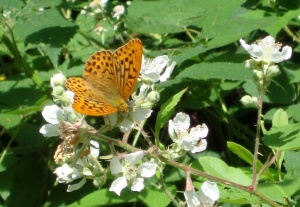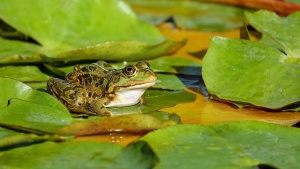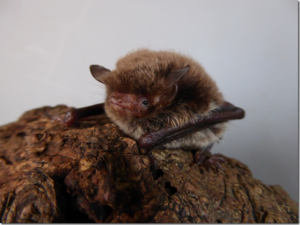60% of the species monitored in the UK over the past 50 years are in decline. Over the years, we have noticed an alarming decline in birds, butterflies and invertebrates, amphibians and mammals in the Valley. We can all play our part to help reverse this trend. Whether you live on a new development or well-established street, we’d love you to give Nature a home in your own garden. Collectively, the potential to create amazing places for wildlife in gardens in the Valley is huge. Post what you've been up to on our Facebook page.
 Here are 10 simple things that you can do to make your garden more wildlife-friendly. If you can manage all 10 you will be on the way to a fantastic wildlife garden, but even doing one is worth while! These tips were reproduced by kind permission of Jenny Steel. Visit her wildlife gardening website.
Here are 10 simple things that you can do to make your garden more wildlife-friendly. If you can manage all 10 you will be on the way to a fantastic wildlife garden, but even doing one is worth while! These tips were reproduced by kind permission of Jenny Steel. Visit her wildlife gardening website.

 Bats are a sign of a green and healthy environment, so creating a garden that's good for bats will also be good for people. These small, fascinating creatures often live in close proximity to us, using our gardens as an important source of food, water and shelter. As their natural habitats become more scarce, our gardens are playing a more important role in securing a future for bats. Bat numbers in the UK have declined dramatically over the last century. To encourage bats in your garden:
Bats are a sign of a green and healthy environment, so creating a garden that's good for bats will also be good for people. These small, fascinating creatures often live in close proximity to us, using our gardens as an important source of food, water and shelter. As their natural habitats become more scarce, our gardens are playing a more important role in securing a future for bats. Bat numbers in the UK have declined dramatically over the last century. To encourage bats in your garden:
Make your garden more wildlife friendly - 10 top tips

Make a nectar border
-
- Relax! Take time to look at what is around you and you will find you are less inclined to tidy areas beneath hedges, or worry too much about trimming the lawn every few days. Enjoy your garden!
- Garden organically. If you avoid the use of pesticides in the garden, you will immediately increase the numbers of insects visiting. This in turn will encourage insect-eating birds including robins, wrens, blue tits and thrushes, mammals such as hedgehogs and shrews, frogs and toads, as well as increase numbers of bees, butterflies and all manner of beneficial insects.
- Plant some wildflowers. Even a red campion tucked under the hedge, or purple loosestrife in the pond edge will increase the numbers of invertebrates visiting your garden, and all other wildlife associated with these native wildflowers will benefit. Wildflowers are important if you want butterflies, moths and other invertebrates to breed in your garden - not just visit it.
- Make a nectar border. Choose carefully from a reliable list of good nectar plants using information from a wildlife gardening book (several are recommended on the Links page of this web site) or from the articles on the Topics page. There are masses of non-native nectar and pollen producing garden plants available and the more you have, the better your garden will be for wildlife.
- Plant a tree. If you have room for a native tree, such as a silver birch or rowan, so much the better, but if not try something like an ornamental crab apple or non-native rowan. You will be amazed at how birds will come to the garden if there is a tree to provide them with perching and roosting places, shelter, and food in the form of seeds and fruit.
- Plant a hedge. A native hedge in the garden, composed of a good mixture of berry bearing, spiky shrubs such as hawthorn and blackthorn, together with dogwood, guelder rose, hazel, spindle… the list goes on and on. Add some wild roses and honeysuckle and recreate a country hedge. Again the birds will flock to an area like this, and reward you by nesting there safely amongst all those spiky plants and small mammals will find shelter and food too.
- Make a meadow. This is the best way to encourage some of our native butterflies into the garden – the ones that don’t often take nectar from Buddleia. Many of our native butterfly species lay their eggs on specific grasses, and having long grass with meadow flowers in the garden is a good way of providing breeding places for meadow browns, gatekeepers, ringlets, speckled woods and the skippers. Other wildlife will also benefit, especially other insects and small mammals.

Make a wildlife pond
- Make a wildlife pond. Any water in the garden is better than none at all. Even an upturned dustbin lid with fresh water will encourage birds to drink and bathe, but a proper wildlife pond with gently sloping edges and wild flowers will be a delight for you and your wildlife visitors. Frogs, toads, newts, mammals, birds, and dragonflies will all benefit.
- Feed the Birds. Feeding your garden birds all year round is a brilliant way of encouraging more species to your garden and helping them in a wider sense. You can also put up a nest box, a bat box, solitary bee homes or create a log pile. Visit Just Add Birds for more information and recommendations.
- Be tolerant! You may well find that things visit you, or ‘weeds’ arrive and you are not keen on them! But remember that spiders attract wrens, and dandelions provide lovely seeds for goldfinches, bullfinches and greenfinches. Once you welcome all native wildlife into the garden, and a balance is achieved, you will find that you are just as fascinated by the creepy crawlies as the colourful birds and butterflies, and they are all of equal importance in your garden habitat.
Help our hedgehogs
- Open hedgehog highways. Sadly, we’ve lost a third of all our hedgehogs in ten years. Fortunately, hedgehogs love gardens. One of the main reasons why they are declining in Britain is because our fences and walls are becoming more and more secure, reducing the amount of land available to them. Ensuring hedgehogs can pass freely through your garden is the most important thing you can do to help them. If you have impenetrable fences, pop round to your immediate neighbours and see if you can come to an agreement to put in some hedgehog highways. All it takes is a 13cm x 13cm hole in a hidden corner of the boundary of your garden.
- Become a Hedgehog Champion. Join Hedgehog Street, which is a joint campaign by People’s Trust for Endangered Species and the British Hedgehog Preservation Society and map where you see hedgehogs. Educate your neighbours!
Create a bat haven

Create a bat haven
- plant night-scented flowers
- build a pond
- let your garden go a little wild
- put up a bat box
- create linear features such as hedgerows and treelines
- reduce or remove artificial lighting
- keep cats indoors at night
